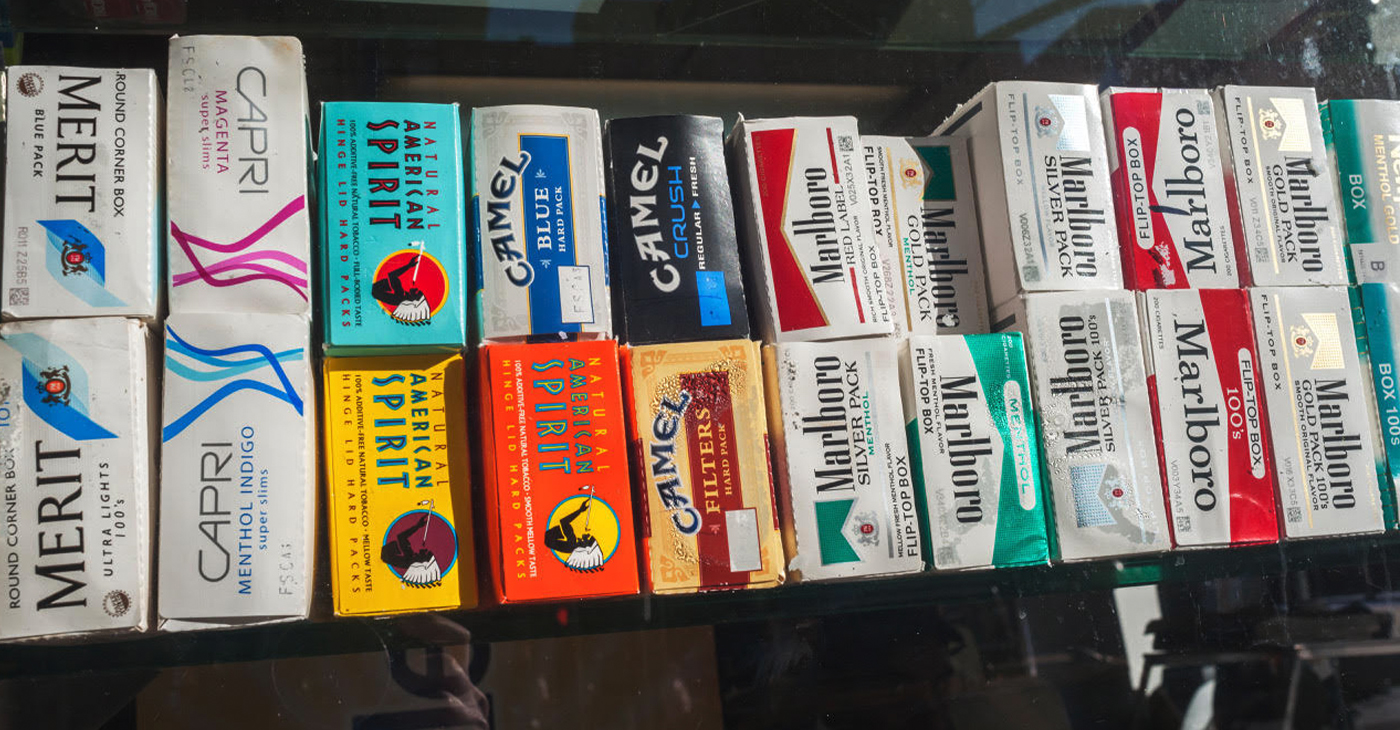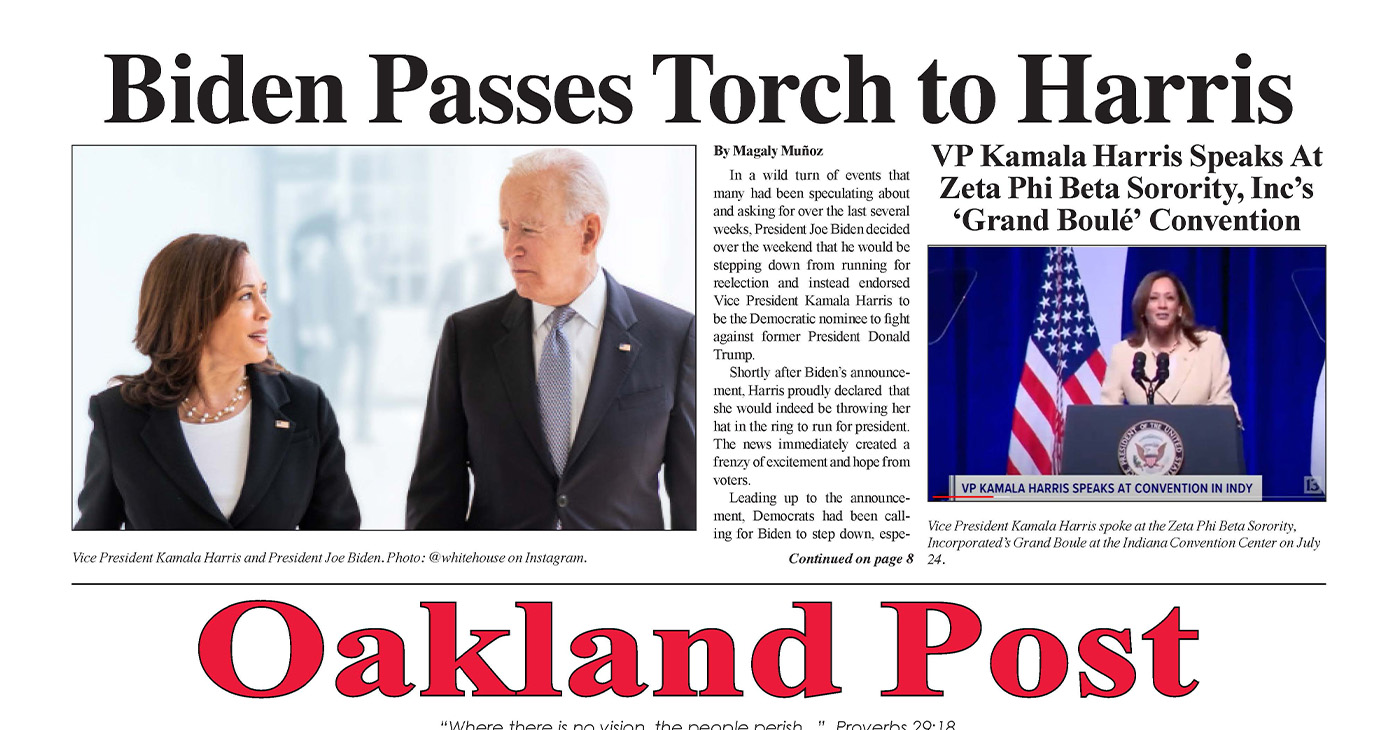Bay Area
Cal Attorney General Wants FDA Standards for Menthol Cigarettes Finalized
As of June 16, 2022, the Campaign for Tobacco-Free Kids reported that 127 localities in California have passed restrictions on the sale of flavored tobacco products. And at least 108 communities restrict the sale of menthol cigarettes, in addition to other flavored tobacco products.

Antonio Ray Harvey | California Black Media
On June 13, Los Angeles Mayor Eric Garcetti signed into law an ordinance restricting the sale of menthol cigarettes and other flavored tobacco products. The ordinance is set to take effect on Jan. 1, 2023.
Last year, a version of the ordinance that exempted menthol cigarettes was opposed by Black council members Mark Ridley-Thomas, Marqueece Harris Dawson and Curren Price. They argued that studies have found Black Americans are the racial/ethnic group most likely to use menthol cigarettes and are 25 times more likely than white Americans to do so.
“Menthol is included in this ban, as it should be,” Harris-Dawson said before the June vote on the ban was taken. “It is a flavor just like every other flavor and it would have been extremely disappointing if we had said we’re going to protect people and children from uptake of tobacco, except for the flavor that we know Black people first, and Latinos second, use the most.”
As of June 16, 2022, the Campaign for Tobacco-Free Kids reported that 127 localities in California have passed restrictions on the sale of flavored tobacco products. And at least 108 communities restrict the sale of menthol cigarettes, in addition to other flavored tobacco products.
In July, California Attorney General Rob Bonta joined a bipartisan coalition of state attorneys general in urging the U.S. Food and Drug Administration (FDA) to adopt final rules for banning the manufacture and sale of menthol cigarettes and flavored cigars from the U.S. marketplace.
“Every day, hundreds of Californians will smoke their first cigarette and start down a dangerous path with devastating health consequences,” Bonta said in a written statement. “There is no time to waste. I urge the FDA to quickly finalize proposed regulations banning menthol cigarettes and flavored cigars, which predominantly harm young persons and people of color. Any further delay will only cost additional lives.”
The coalition that Bonta joined includes attorney generals from Colorado, Connecticut, Delaware, Illinois, Pennsylvania, Idaho, Hawaii, Maine, Maryland, Massachusetts, Minnesota, Nevada, New Mexico, New York, North Carolina, Rhode Island, South Dakota, Vermont, the District of Columbia and the territories of Guam, Puerto Rico and the U.S. Virgin Islands.
In the letter to the FDA, the attorneys general coalition highlighted the need to remove these products from the marketplace to protect public health and address the systemic and disproportionate impact of these products on vulnerable minority communities.
The FDA action to remove menthol cigarettes and flavored cigars is long overdue and supported by ample scientific evidence and their “popularity in the Black community is not an accident,” the letter stated.
They cited research that found menthol cigarettes disproportionately harm the health of vulnerable populations, particularly African Americans.
Overwhelming scientific evidence — including the FDA’s own findings and statements — leave no doubt that menthol cigarettes have far-reaching adverse impacts on public health, resulting in more smoking and more death and disease from tobacco use.
A recent study, published in Tobacco Control, found that menthol cigarettes “were responsible for 10.1 million extra smokers, 3 million life years lost and 378,000 premature deaths” between 1980 and 2018.
Menthol flavoring, which disguises the harsh taste of cigarettes, remains a primary reason why young people initiate and become addicted to smoking — with more than half of all adult smokers aged 18-34 introduced to smoking through menthol cigarettes.
Menthol cigarette use is also disproportionately high among LGBTQ+ smokers, smokers with mental health problems, and socioeconomically disadvantaged populations.
In August 2020, Gov. Gavin Newsom signed Senate Bill (SB) 793, a bipartisan effort that eliminated flavored e-cigarettes, including the candy flavors and minty menthol cigarettes, which he said, “lure our kids” into addiction. SB 793, authored by former Sen. Jerry Hill (D-San Mateo), also prohibits the sales of flavored e-liquids used for vaping.
Last year, Newsom called on the FDA to ban menthol cigarettes, stating that it “will be an important step in the right direction.”
“I urge the federal government to follow California’s leadership to protect public health and advance racial equity by moving to ban menthol-flavored cigarettes,” Newsom stated in April 2021. “For decades, Big Tobacco has targeted and profited from Black communities with marketing for minty menthol cigarettes and as a result, smoking-related illnesses are the number one cause of death among Black Americans.”
In their letter, the coalition argues that the FDA’s proposed menthol ban is a critical step for advancing health equity and protecting public health and will not significantly increase illicit trade or preempt state or local restrictions.
“Removing menthol cigarettes from the U.S. market and prohibiting characterizing flavors in cigars is likely to reduce youth smoking initiation, improve smoking cessation outcomes in adult smokers, advance health equity, and benefit public health. Every year of inaction on these fronts costs thousands of lives and adversely affects the health of the public,” the attorneys general of 23 states and territories stated in a signed letter dated Jan. 22, 2021.
On the November 8 General Election ballot is Proposition 31 a referendum challenging SB 793 and aims to lift the current ban preventing stores from selling flavored e-cigarettes, menthol-flavored e-cigarettes and flavored tobacco products. A YES vote keeps the current ban on flavored tobacco products. A NO vote lifts the ban.
Activism
Oakland Post: Week of July 24 – 30, 2024
The printed Weekly Edition of the Oakland Post: Week of July 24 – 30, 2024

To enlarge your view of this issue, use the slider, magnifying glass icon or full page icon in the lower right corner of the browser window. ![]()
Activism
Oakland Post: Week of July 17 -23, 2024
The printed Weekly Edition of the Oakland Post: Week of July 17 -23, 2024

To enlarge your view of this issue, use the slider, magnifying glass icon or full page icon in the lower right corner of the browser window. ![]()
Bay Area
Op-Ed Senate Bill 966 Threatens Health Equity in East Bay
My East Bay community is struggling to get by. A proposed State Senate bill would set us back even further. Serving the East Bay community has been my life’s work and my greatest joy. After leaving the Bay Area to complete my seminary, I returned home to found The Community Church in Oakland. From the outset of my time as the church’s pastor, I have been guided by the belief that my service must extend beyond the pulpit, because the health and economic needs of my community are so great. Our church has organized free food banks, COVID-19 testing clinics, and a housing and re-entry program for those suffering from addiction.

By Rev. Dr. Lawrence E. VanHook
Special to the Post
My East Bay community is struggling to get by. A proposed State Senate bill would set us back even further.
Serving the East Bay community has been my life’s work and my greatest joy. After leaving the Bay Area to complete my seminary, I returned home to found The Community Church in Oakland.
From the outset of my time as the church’s pastor, I have been guided by the belief that my service must extend beyond the pulpit, because the health and economic needs of my community are so great. Our church has organized free food banks, COVID-19 testing clinics, and a housing and re-entry program for those suffering from addiction.
Through my service, I have seen the challenges that our community members are facing. Oakland, my hometown, has the third-highest rate of violent crime in the state. The local economy is strained. Oakland-based businesses are leaving our community because they’re struggling to get ahead.
Both East and West Oakland has disproportionately high rates of respiratory illness due to heavy air pollution. While our local efforts have brought some aid to those in need, we are also counting on our state elected officials to help us address the systemic health disparities afflicting the community.
Chief among the health concerns of community members is having reliable and affordable access to prescription drugs. Equitable access to medications gives us the peace of mind that we can keep ourselves and our families healthy and safe. Our community should not have to choose between paying rent or purchasing prescriptions.
Unfortunately, rather than taking action to combat soaring prescription drug prices, some California lawmakers are pushing legislation that could raise patient costs at the pharmacy counter.
The Legislature is currently considering SB 966, a bill backed by special interests that would undercut the few tools we have to keep prescription drug costs contained, letting big drug companies increase their prices, profiting on the backs of working families – some of whom already live paycheck to paycheck.
SB 966 would target the fundamental programs through which small businesses, unions, and government health programs are able to offer their employees and members quality and affordable healthcare. Millions of Californians rely on these plans to obtain essential medications at the lowest-possible cost.
The bill would make it illegal for employers and unions to incentivize the administrators of their prescription drug plans to negotiate for the lowest possible cost for prescriptions. Right now, small businesses and unions can choose to pay these administrators more for taking on big drug companies and securing discounts – a choice that will be outlawed under this bill.
As a result, employers will have no leverage to stop big drug companies from setting sky-high prices, disproportionately impacting working families.
As these health costs quickly add up, employers will have little choice but to pass the increases down to their employees. That means California patients will see higher healthcare costs and co-pays.
From my perspective, most concerning is that the bill would exacerbate the health disparities impacting my community and other underserved populations. If SB 966 becomes law, the most vulnerable may be forced to skip prescription doses, stop filling their prescriptions, and avoid essential care.
By rejecting this cash grab by big drug companies, our state elected officials can send a clear message that they stand with the community, patients, and working families.
We cannot afford SB 966.
Rev. Dr. VanHook is the founder and pastor of The Community Church in Oakland and the founder of The Charis House, a re-entry facility for men recovering from alcohol and drug abuse.
-

 Arts and Culture3 weeks ago
Arts and Culture3 weeks agoRooted in Tradition: The Intricate History of Black Hair Braiding
-

 Bay Area4 weeks ago
Bay Area4 weeks ago“I Will Not Be Bullied,” Says Oakland Mayor Sheng Thao
-

 Bay Area2 weeks ago
Bay Area2 weeks agoPG&E Increases Rates While Bay Area Households Are Struggling to Stay Afloat
-

 Business3 weeks ago
Business3 weeks agoGov Newsom: Raising Fast Food Minimum Wage to $20 Pays Off as Jobs Multiply in Industry
-

 Activism4 weeks ago
Activism4 weeks agoOpponents of Mayor Sheng Thao Are Calling on Her to Resign Following FBI Raid
-

 Community1 week ago
Community1 week agoHundreds Come to Jehovah’s Witnesses’ Assembly Hall for Three-Day Program of ‘Good News’ in Fremont
-

 Bay Area2 weeks ago
Bay Area2 weeks agoJuneteenth Mass Shooting Suspect Charge with Multiple Counts of Felony Assault by Alameda County DA Pamela Price
-

 Activism4 weeks ago
Activism4 weeks agoOakland Coliseum Sale to AASEG: A Model for Community Development and Inclusion

















































